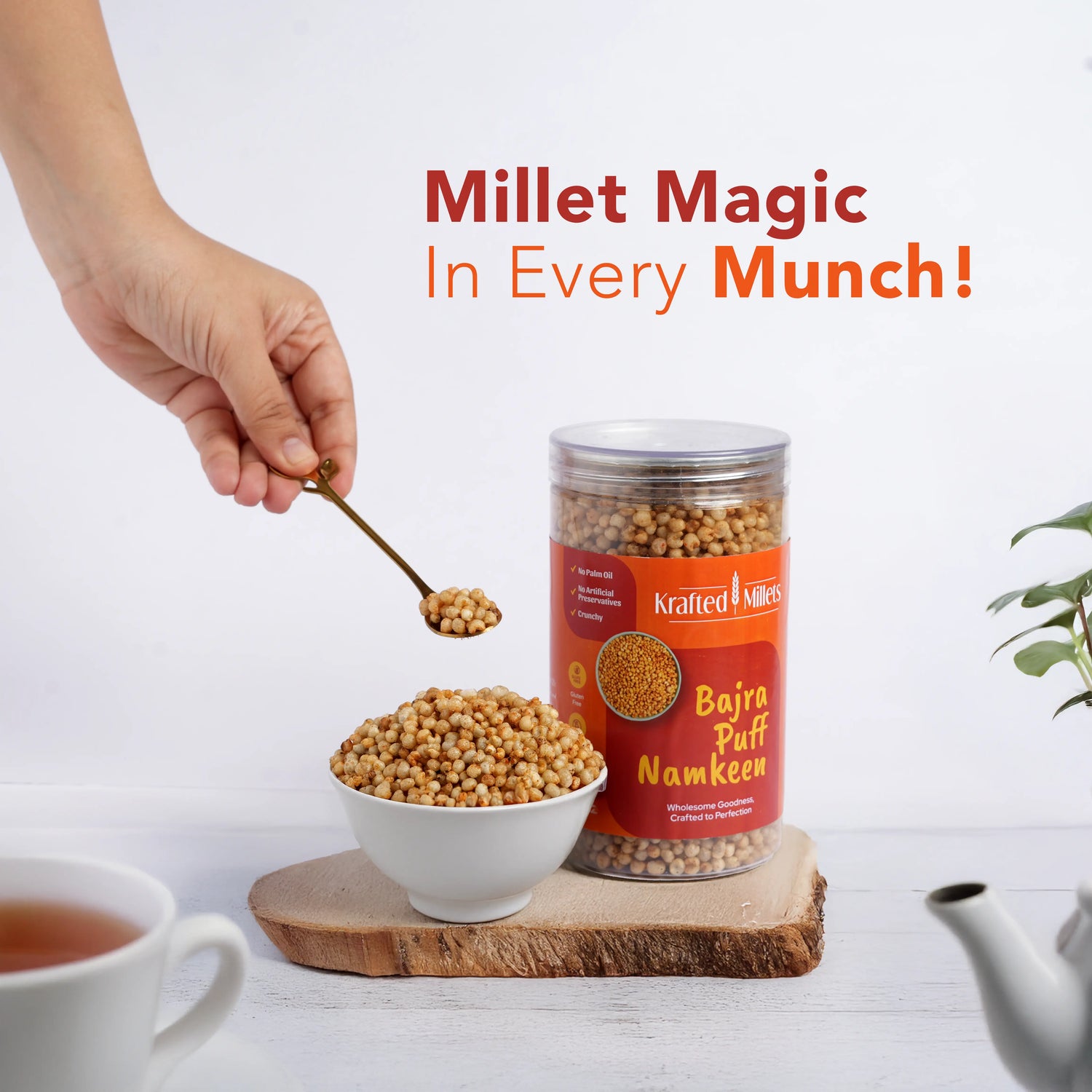📌 Introduction
In today’s world, where health-conscious eating is gaining importance, people are searching for nutritious alternatives to staple grains like rice and wheat. Millets, often called "ancient super grains," have been a part of traditional diets for centuries but are now making a strong comeback. But what makes millets a better choice? Let’s explore how they compare to rice and wheat in terms of nutrition, health benefits, and sustainability.

1. Millets Are More Nutrient-Dense Than Rice & Wheat
Millets are packed with essential nutrients that are often lacking in polished rice and refined wheat.
| Nutrient | Millets (Avg. per 100g) | Rice (White, per 100g) | Wheat (Refined, per 100g) |
|---|---|---|---|
| Protein | 8-12g | 6-7g | 9-10g |
| Fiber | 8-10g | 0.2-0.4g | 2-3g |
| Iron | 3-8mg | 0.4mg | 3-5mg |
| Magnesium | 90-120mg | 19mg | 23mg |
| Glycemic Index | 54-68 | 73-89 | 70-75 |
📌 Why This Matters?
- More fiber in millets supports digestion and prevents constipation.
- Higher protein content makes them a great plant-based protein source.
- Lower glycemic index helps in managing blood sugar levels
2. Millets Help in Weight Management
If you're trying to lose or maintain weight, millets are a superior choice because:
✔ High fiber content keeps you full for longer, reducing hunger cravings.
✔ Lower glycemic index prevents insulin spikes that lead to fat storage.
✔ Rich in complex carbs, they provide sustained energy without rapid sugar crashes.
3. Millets Are Great for Managing Diabetes
Polished white rice and refined wheat have high glycemic index values, meaning they quickly spike blood sugar levels. Millets, on the other hand:
✔ Release sugar slowly into the bloodstream.
✔ Improve insulin sensitivity.
✔ Help in diabetes management and prevention.
According to studies, diabetics who switched to millets experienced better blood sugar control compared to those eating refined grains.
4. Millets Are Gluten-Free – Perfect for Those with Gluten Sensitivity
Many people suffer from gluten intolerance or celiac disease, making wheat a problematic food. Since all millets are naturally gluten-free, they are an excellent alternative for:
✔ People with gluten allergies.
✔ Those suffering from celiac disease.
✔ Anyone looking to improve gut health.

5. Millets Are More Sustainable & Eco-Friendly
Unlike rice and wheat, which require a lot of water and chemical fertilizers, millets are drought-resistant and require minimal resources to grow.
✔ Grow in poor soil conditions with minimal irrigation.
✔ Require fewer pesticides and fertilizers.
✔ Lower carbon footprint compared to rice and wheat farming.
Fact: Producing 1kg of rice requires 5,000 liters of water, whereas millets need only 300-500 liters!
6. Millets Offer Versatile Cooking Options
Millets can easily replace rice and wheat in daily meals. Here are some delicious millet-based dishes:
🍽 Millet Rice – Use foxtail or barnyard millet instead of white rice.
🥞 Millet Rotis & Chapatis – Jowar or bajra flour makes excellent rotis.
🍜 Millet Noodles & Pasta – A healthier alternative to refined wheat pasta.
🥣 Millet Porridge & Upma – A perfect high-fiber breakfast option.
Conclusion: Switch to Millets for a Healthier Future
Millets are a nutrient-dense, sustainable, and versatile alternative to rice and wheat. Whether you want to manage weight, control diabetes, or simply eat healthier, switching to millets can transform your diet and well-being.
So, why wait? Make the switch to millets today!








